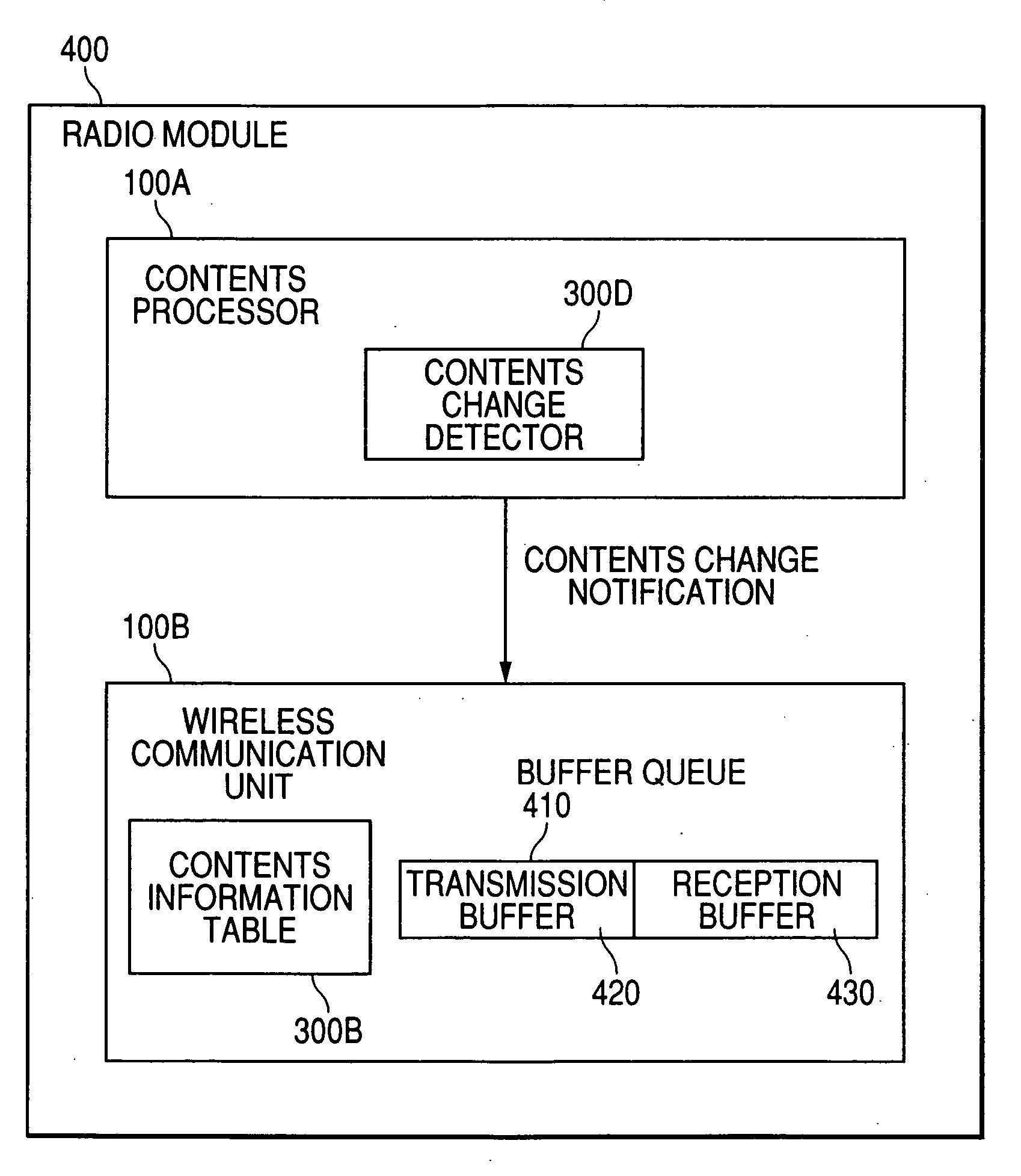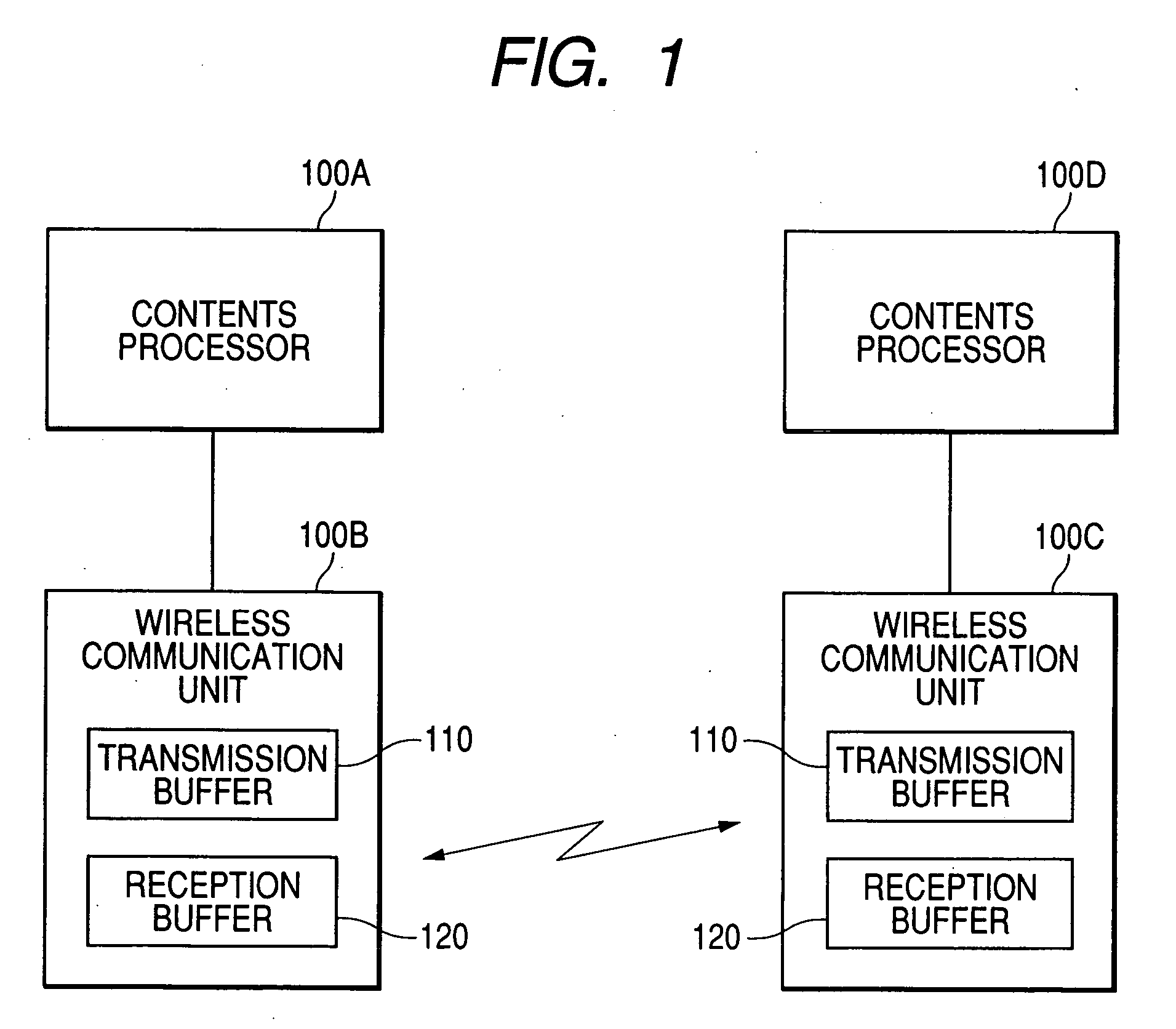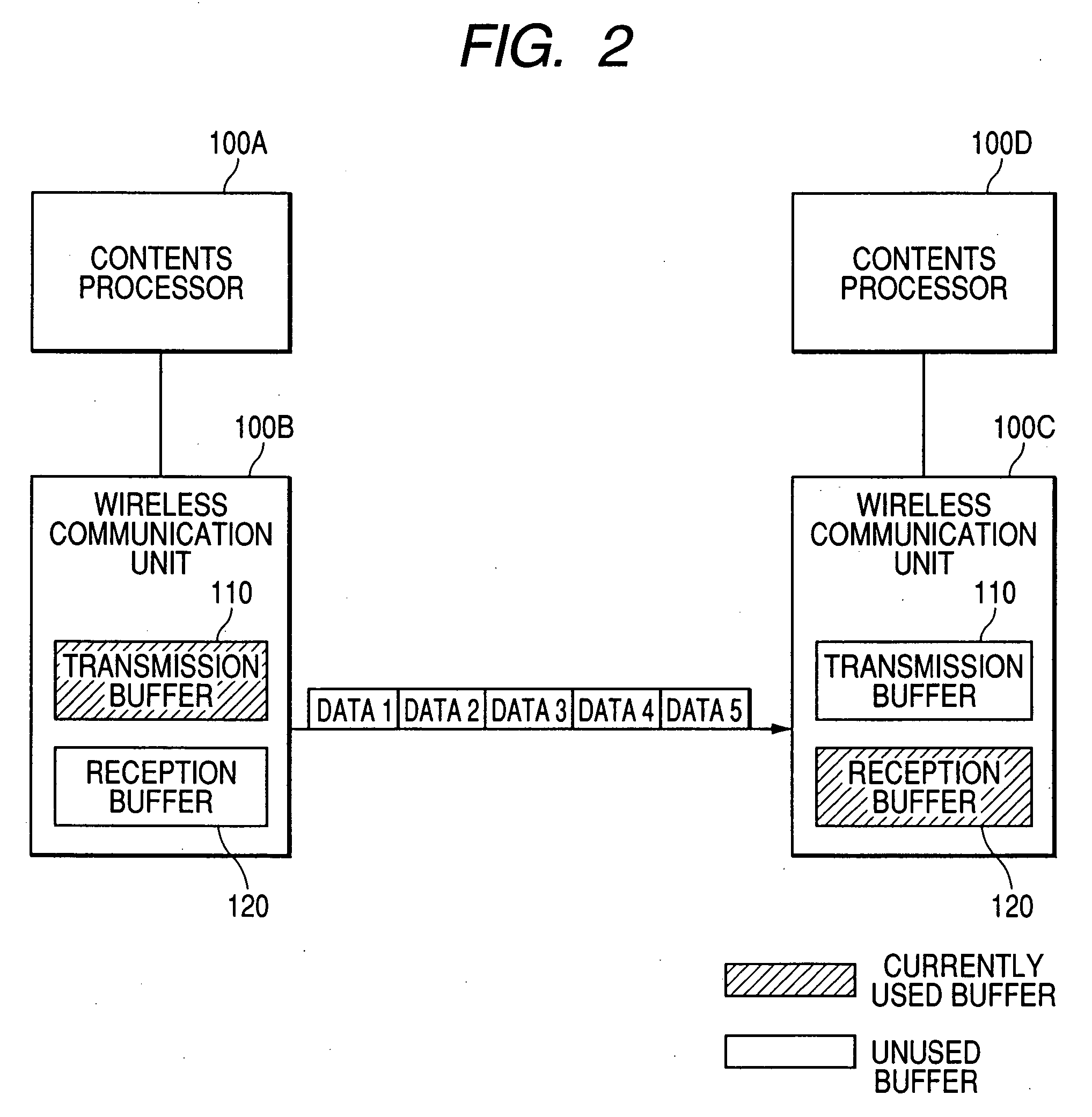Radio module
a radio module and module technology, applied in the field of radio modules, can solve the problems of reducing the size of the reception buffer, hindering the performance of a required transmission process, and wasting memory resources,
- Summary
- Abstract
- Description
- Claims
- Application Information
AI Technical Summary
Benefits of technology
Problems solved by technology
Method used
Image
Examples
first embodiment
[0061]FIG. 3 is a schematic block diagram showing the configuration of a radio module 400 according to a first embodiment of the present invention. The radio module 400 for this embodiment comprises: a wireless communication unit 100B, for performing wireless communication for the contents; and a contents processor 100A, for processing the contents that are to be transmitted or that are received by the radio communication unit 100B.
[0062] Included in the contents processor 100A is a contents change detector 300D. When the contents are changed, the contents change detector 300D transmits to the wireless communication unit 100B a contents identifier corresponding to the contents that are newly to be processed by the wireless communication unit 100B.
[0063] The wireless communication unit 100B includes a contents information table 300B, in which information concerning the contents is stored. The wireless communication unit 100B examines the contents information table 300B, and based o...
second embodiment
[0079] The contents are not always transmitted or received at a specific, constant rate. The rate at which the contents are stored in the contents information table 300B in FIG. 4 is the average rate for the contents, and were the rate to be locally increased, this would cause a buffer overflow.
[0080] Therefore, as is shown in FIG. 8, an entry for use history is added to the contents information table 300B. The use history then corresponds to the maximum sizes of buffers actually used, in the past, for transmission and reception. Since, however, the buffer use history information for the individual contents is retained, the maximum sizes of buffers actually used in the past can be obtained. In this embodiment, basically, instead of the sizes of buffers being calculated based on the average rate, buffers having sizes based on the use history are allocated for the transmission buffer 420 and the reception buffer 430.
[0081] However, when the total size of a buffer nears the limit, th...
third embodiment
[0084] For wireless data communication, the error state may constantly be changed due to the installation location or the interference provided by an obstacle or another wireless device. Because of this, the optimal distribution of the transmission buffer 420 and the reception buffer 430 may not be obtainable even when these buffers are appropriately distributed in accordance with the communication rate.
[0085] To cope with this case, at a specific interval, a transmission terminal collects statistics on for the frequency of transmissions and the frequency of errors, calculates the error rate based on the obtained statistic data, and changes the size of the buffer in accordance with the error rate. In this manner, the optimal size of the buffer can always be distributed.
[0086] In FIG. 10, the required size of the buffer for each error rate is additionally entered as an error correction value to the contents information table 300B. In this embodiment, the size of the buffer is rearr...
PUM
 Login to View More
Login to View More Abstract
Description
Claims
Application Information
 Login to View More
Login to View More - R&D
- Intellectual Property
- Life Sciences
- Materials
- Tech Scout
- Unparalleled Data Quality
- Higher Quality Content
- 60% Fewer Hallucinations
Browse by: Latest US Patents, China's latest patents, Technical Efficacy Thesaurus, Application Domain, Technology Topic, Popular Technical Reports.
© 2025 PatSnap. All rights reserved.Legal|Privacy policy|Modern Slavery Act Transparency Statement|Sitemap|About US| Contact US: help@patsnap.com



